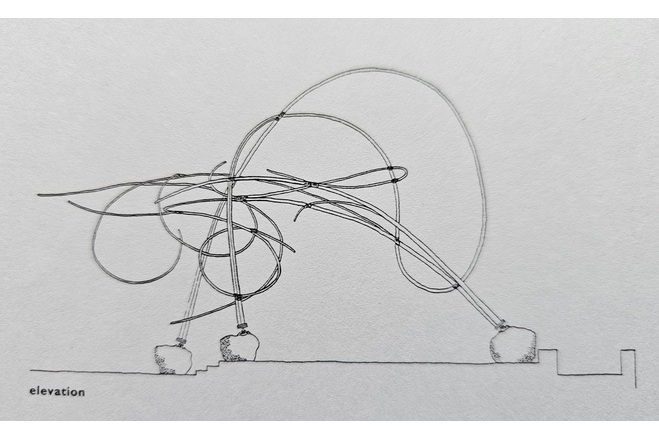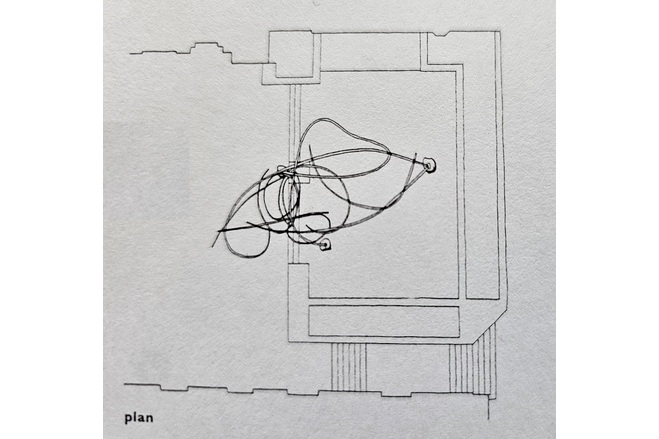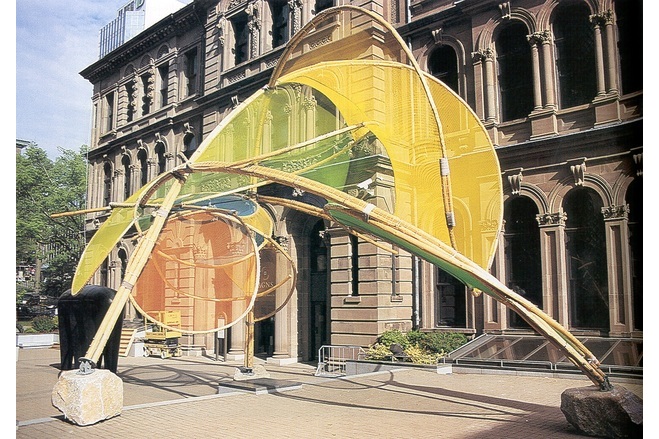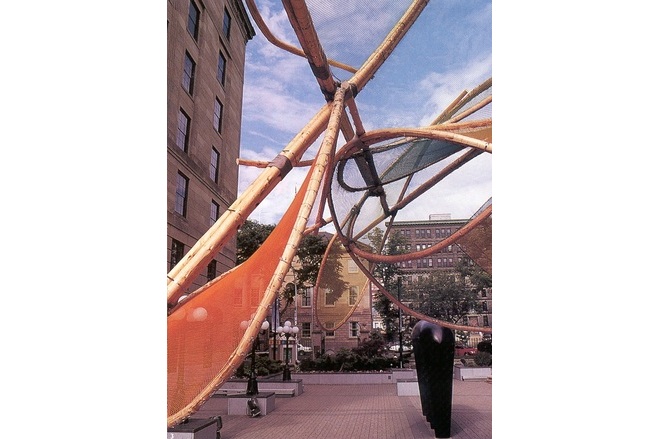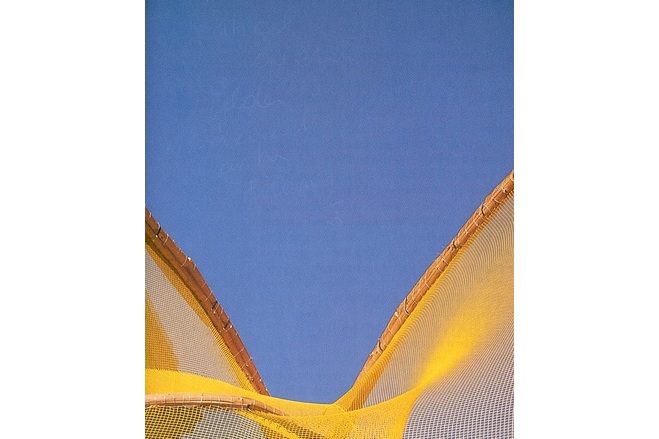Hummingbird Installation
General information
-
Home page
https://www.thefreelibrary.com/SURFACE+TENSION.-a072302586
-
Location address
(old) Art Gallery of Nova Scotia
-
Location country
Canada
-
Year of construction
2000
-
Name of the client/building owner
Art Gallery of Nova Scotia
- Function of building
Description
SURFACE TENSION.
Sinuous and colourful, this ephemeral installation makes ingenious use of lightweight tensile construction techniques.
Commissioned by the Art Gallery of Nova Scotia to celebrate the millennium, Hummingbird is an extraordinary experimental installation. Like a giant insect come to rest between two historic buildings in Halifax's central business district, this ephemeral work of architecture provides a challenging comment on the role of modern design in a city that promotes preservation at the expense of experimental architecture. Designed by Filum, a young Canadian practice, the project owes a clear debt to Modernist explorations of lightweight tensile architecture, especially the work of Frei Otto, whose German pavilion at the 1967 Montreal Expo and stadium for the Munich Olympics of 1972 presented entirely new and radical forms of lightweight structures, Yet since those early experiments, tensile structures have only slowly evolved.
Hummingbird explores the potential for new forms using the construction and modelling techniques of lightweight structures. Reflexively curving back on itself, the structure adopts a morphology of curves and planes that collide freely into one another, almost accidentally. Multiple layers of nets stretched over the structural frame create a dramatic and ever-changing play of opacity and translucency as the viewer moves in and around the installation.
Constructed from bentwood, Hummingbird draws on recent investigations by Buro Happold in England and Richard Kroeker in Canada into the design of large-scale structures using green timber. In this case, Filum chose to work with small diameter conifers that grow in abundance in the Eastern regions of Canada. By using small, freshly cut spruce trees rather than dry lumber, the cumbersome process of steaming was avoided. To bend the green wood into complex curves, a technique was devised that involved cold forming the timber onto moulds, dry laminating it with nails rather than glue, and then staggering the splices to achieve visual and structural continuity. The result is that each laminated member flows into the next one, a process that could be repeated indefinitely. To complete the installation, hand-dyed nets were stretched into place like webbing on a snowshoe; applied while wet, they prestressed the structure as they dried. Free-form, colourful and ephemeral, the structure stands as a counterpoint to the permanent, monumental architecture that surrounds it. Like the derive of the Situationists, it disturbs old assumptions and encourages new forms of interaction that have nothing to do with consumption, circulation or tourism. Provocative and unsettling, Hummingbird brings pedestrians to a halt but does not dictate the activities which might happen in and around it. Rather, it creates a space which is open to interpretation and spontaneity, adding to the life of the city.
CATHERINE SLESSOR
The Architectural Review, Feb 2001
Description of the environmental conditions
Material of the cover
Main dimensions and form
Duration of use
-
Temporary or permanent structure
Temporary
Involved companies
-
Architects
Filum
Editor
-
Editor
Marijke M. Mollaert


